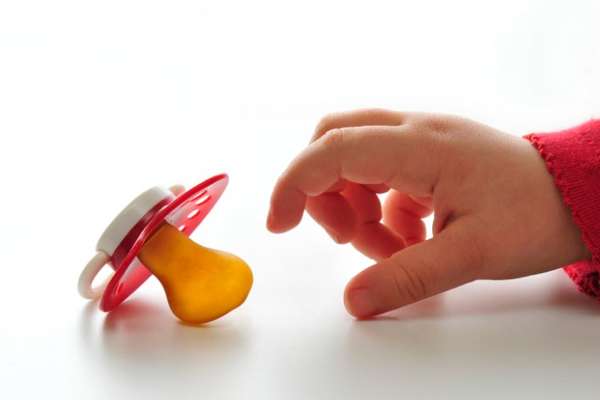
All You Need To Know About Pacifiers
2 Oct 2015 | 5 min Read
Prachi Arora
Author | 28 Articles
Oh my God! Is that a Nipple? Are you giving your daughter a Pacifier? Do you know this can damage her teeth? Does she use it regularly? And so many more questions I have been bombarded with. So here is what I have gathered about pacifiers, and thought may be helpful to share with all mothers who are faced with such questions or are considering using it.
You can call them by many names – Pacifiers, Soothers, Binkers, Dummies… I call them lifesavers. Here are a few myths and facts about them.
So, What is a Pacifier?
As the name suggests, it helps in pacifying a kid. It is a rubber or, silicone based nipple with a handle.
Why a baby or a toddler needs it?
I’m sure many of us have seen our fetuses sucking their thumb during the ultrasound scans.
But, do you know why they do it? Every child has an acute need to suck that is completely dissimilar from their need to feed. Some babies satisfy their needs to suck while breastfeeding; however, some children experience a stronger need to suck. So, those babies either use pacifiers or their thumb.
Right time to introduce Pacifiers:
It is always right to use a pacifier after the sixth week. By that time, the mother will be able to express milk properly and create a bond with the child. The same rule applies to bottle feeding too.
Advantages of Pacifier:
1.Satisfy the sucking need:
Generally, breast or bottle fulfills this need. However, at times, babies are naturally urged to suck some more.
2. Reduce the danger of SIDS:
In a recent research, it has been found that pacifier reduces the chances of sudden infant death syndrome, if given at the sleep time.
3. Learning how to self soothe:
At an early age, the child learns to calm himself/herself when feeling irritable, sleepy, hungry or needs attention.
4. Helps to distract from a difficult situation:
In many situations like after vaccination, ear piercing, injury or separation from parents, it helps to calm the baby and relieve anxiety.
5. Baby falls asleep on his/her own:
It calms the baby while sleeping, just like you help him/her do which results in inducing a drowse rather quickly.
6. Best friend during flights:
It will prevent the child’s ears getting blocked during air travel, especially when air pressure fluctuates during take off and landing.
7. Pacifiers can be disposed off when not required:
Unlike your baby’s thumb, when you don’t need a pacifier you can throw it away.
8. Helps premature baby to breastfeed:
It aids in strengthening mouth muscles which works amazingly well with a premature baby and makes him/her ready to breastfeed in the coming days.
9. Relieves teething pain:
It really helps baby while teething, as it relieves the pain and irritation in the gums.
10. Helps in taking burps:
Little infants sometimes don’t burrp easily; continuous movement of mouth helps baby to burrp.
Side effects of Pacifiers:
1. Nipple confusion:
Don’t give pacifier before 6 weeks, until the baby is familiar with nursing practice and your milk supply is established. Studies have shown that there are no known problems in using pacifier after that period.
2. Ear infection:
Frequent or continuous use may cause more ear infections more frequently, as compared to those who don’t use a pacifier.
3. Dental problems:
Prolonged use of a pacifier may cause damage to child’s teeth alignment. However, if the pacifier is weaned off before the second birthday, then such a probability is less.
4. Dependency on Pacifier:
Excessive use of pacifier may make the baby too dependent on it, and the baby may wake up in the night when the pacifier falls out of mouth.
When to say “Bye-Bye” to Pacifier & How?
By the time the second birthday arrives, pacifier usage should be stopped.
How to get rid of a pacifier?
1. Voluntary refusal by child: Ask your child to give it up for the pacifier fairy or for a dear friend or sibling.
2. Make A hole: Make a hole in pacifier by using a pin. The fun they have while sucking lessens so they don’t feel like doing it anymore.
3. Reward child: Reward child with a star/smiley for not using pacifier, continue this for a week at least.
4. Spend exculsive time with baby: Involve baby in different fun activities and spend exclusive time, which lessens the need for the acifier in the child’s mind.
5. Out of sight, out of mind: Use only during the sleep time, and then gradually remove it from the baby’s sight or throw it. In case if she asks for it – Pretend you don’t even know.
Lastly, while using pacifier, bear the following in mind:
• Buy pacifier as per the age and it must be BPA free
• Sterilize pacifiers after every 24 hours and check for cracks or damage
• Never coat sugary content on pacifier
• Never give pacifier at meal times
• Never put a pacifier clip, around child’s neck
• Never use bottle nipple as a substitute
• Never use your mouth to clean it
So, bring home one, if your child needs some extra ‘peace’
Happy Parenting!!
A


Related Topics for you
Suggestions offered by doctors on BabyChakra are of advisory nature i.e., for educational and informational purposes only. Content posted on, created for, or compiled by BabyChakra is not intended or designed to replace your doctor's independent judgment about any symptom, condition, or the appropriateness or risks of a procedure or treatment for a given person.
